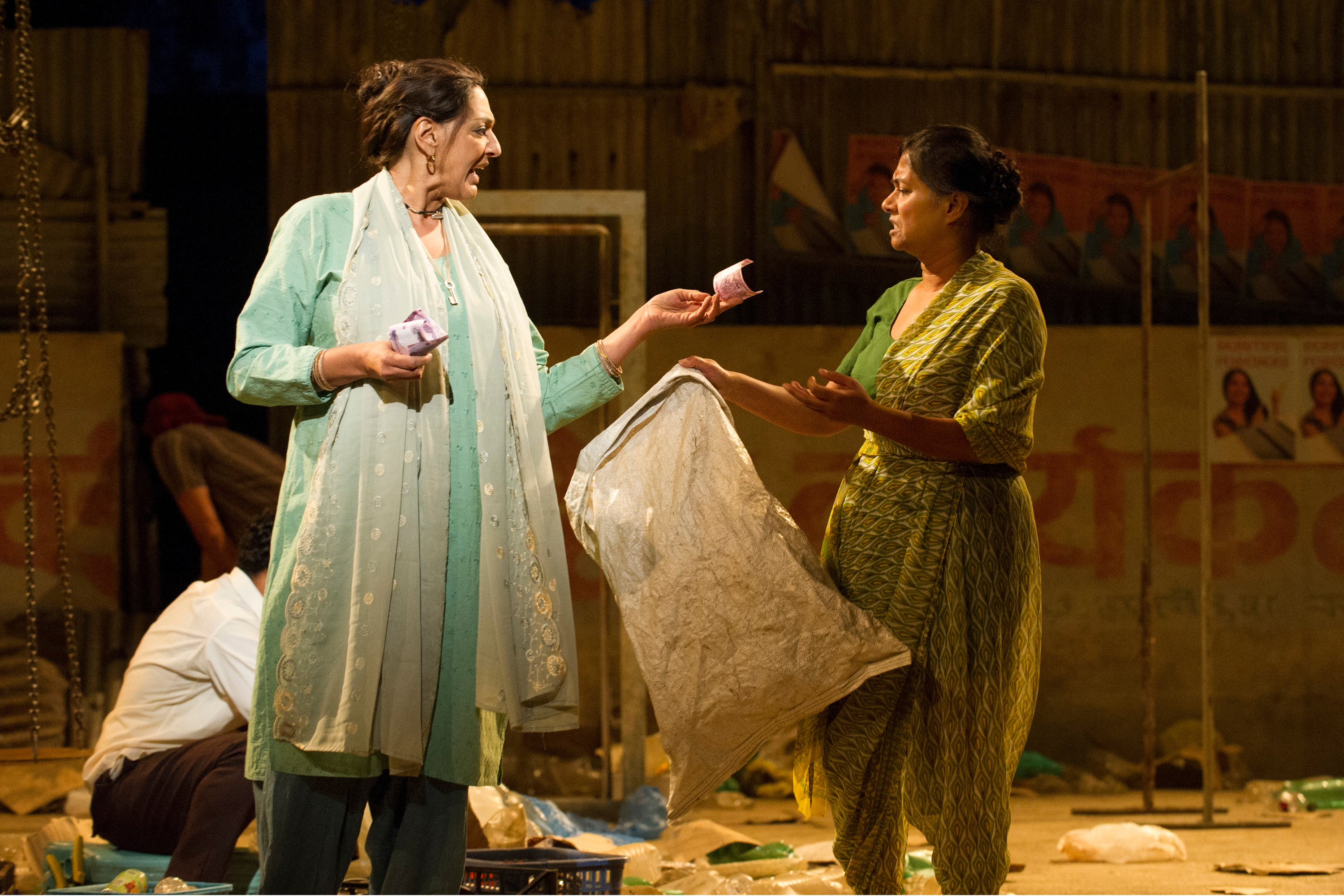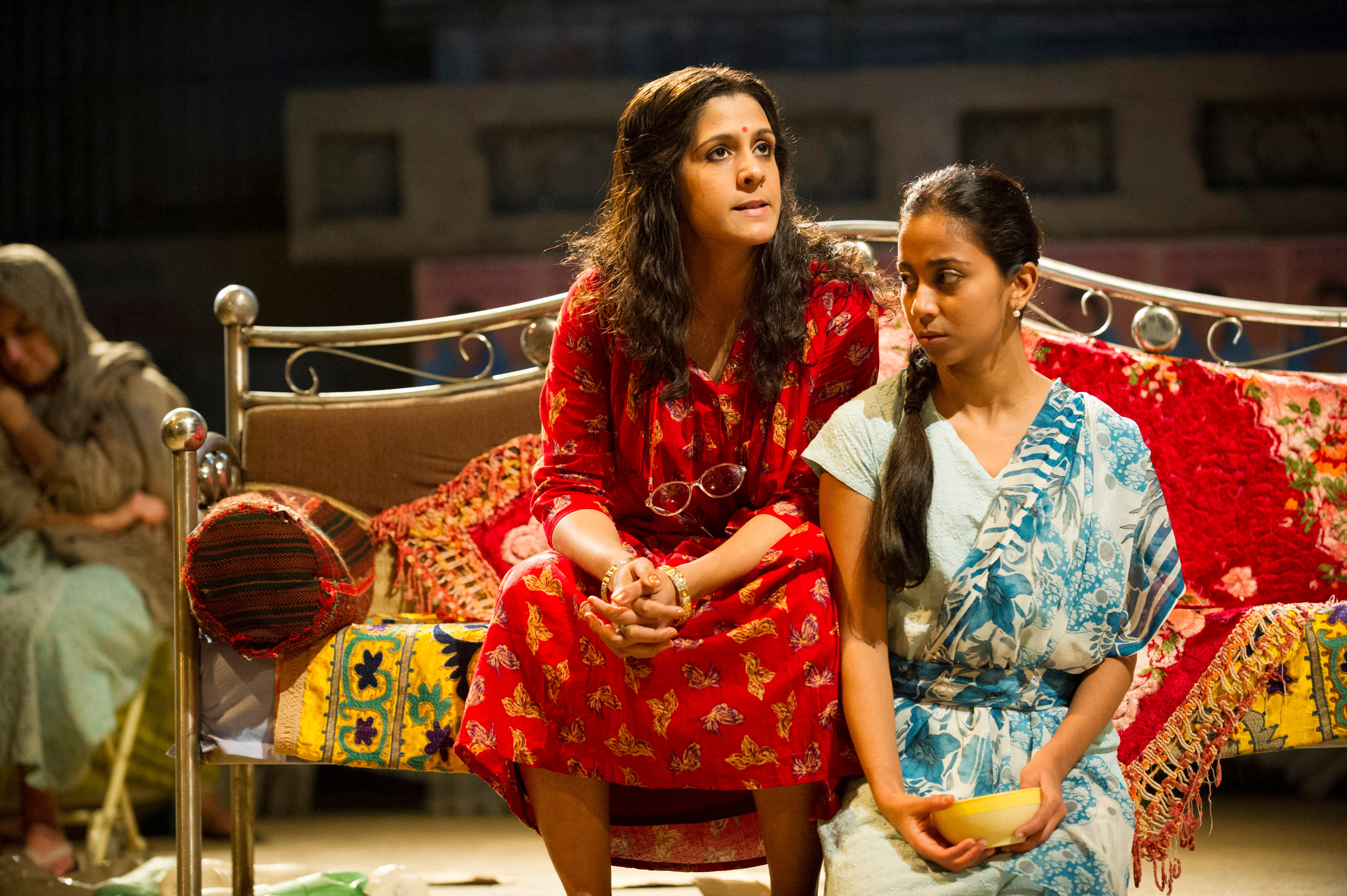Behind the Beautiful Forevers: Theatre Review
The National Theatre welcomes Meera Syal in her latest theatrical performance, Behind the Beautiful Forevers, reviewed by Punjab2000 journalist Amrit Matharu. The Play by David Hare is based on the non-fiction book by Katherine Boo. India is surging with global ambition. But beyond the luxury hotels surrounding Mumbai airport lies a makeshift slum, full of people with plans of their own.
Behind the Beautiful Forevers is a product of Boo’s three years spent documenting the slums of Mumbai in India. With great intellect and creative prowess, Boo explores the landscapes of her Indian husband’s country and its economic transformation. The text questions how, amongst the skyscraping luxury condominiums, is it that the Mumbai underworld harbours its own economic trade.
Mumbai is where the story unfolds, with its lush descriptions of wild festivals, megalomaniacal gangsters and soulful prostitutes. Boo reveals her discovery of domestic women and girls, the improvisational labour of a temp-job city and educational options available to the poor. What Hare does, is bring those in-the-book opportunities to be experienced on the stage.
Even the smells of chilli chicken and rice meals that the people of the slums beg, steal and scam for are brought to the audiences’ sensory experience. Amongst the flavour of the dry Indian air and robust industrial city immersed in Bollywood, airports and its highflyers, the audience are entertained by the authentic essence of spicy Mumbai and the sweat of its hustling and bustling people.
Set in Mumbai’s Annawadi, Boo had not set out on a journey to tell flamboyant tales or describe the most-talented people, but rather discover stories that potentially bring to light the structure of a community. Abdul Hussain for example is the character who brings to life the questioning of criminal behaviour and the Indian justice system. As best sorer in the recyclables business, Abdul symbolises how the global demand for what some would call rubbish-picking, is actually another’s hunt for gold.
Hare allows the audience to visualise Boo’s understanding of the lives of the poor and the policies that get determined for them. It does not portray perfect heroines and villains, saviours and saboteurs – instead it asks us, what would you in this situation?
The tale of Annawadi’s people is just one of many under cities of the world. The characters of Behind the Beautiful Forevers each represent a different dilemma faced by each of those underworld individuals – How do I get myself – or at the very least my children – into the middle class? How do I get my ID papers? How can I feel safe knowing my shack-of-a-home won’t be knocked down by the authorities? How do I give my child an education? When will I get medicine to make me better to look after my family? How will we eat?
The citizens of the Annawadi slum are a reinforced view of how certainty will always remain uncertain. Almost no-one has permanent work, homes, food, friends or family. Sunil Sharma comes to understand this through how the global market works; Wall Street is the metaphor: “Everyone says ‘Wall Street’. They all say ‘Wall Street’s crashed’… And here I can tell you what’s changed. A kilo of empty water bottles – a few weeks ago, you got twenty-five rupees. Today you get ten.”
The play reminds us of the political corruption executed by the police and governments of India who exploit the desperate and hopeful people to gain their own economic security. Ultimately Behind the Beautiful Forevers demonstrates the dog eat dog reality of this world.
The theme of education is frequently touched upon as a supreme source of power that seems unreachable to the poor. Asha seeks to steal government anti-poverty funds to turn herself into a ‘first-class person’, while her daughter Manju, an intelligent young girl intends to become the slum’s first female graduate. Zehrunisa and her son Abdul aim to recycle enough rubbish to fund a proper house, while Sunil, twelve and stunted, wants to eat until he’s as tall as Kalu the thief.
Behind the Beautiful Forevers is a truly mesmerising production that allows you to agree with each character’s physique, absorb their thoughts and emotions while considering the others’. A commending work of Boo and Hare, that brings together an insightful view of the often hidden reality of slum life India.






